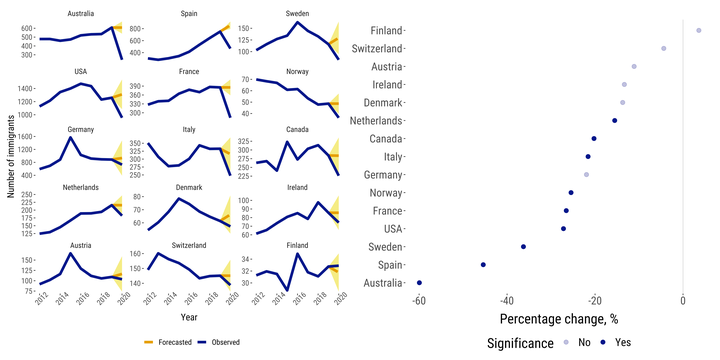Quantifying the impact of COVID-19 on immigration in receiving high-income countries

Abstract
Previous studies have examined the impact of COVID-19 on mortality and fertility. However, little is known about the effect of the pandemic on constraining international migration. We quantify the impact of COVID-19 on immigration flows in 15 high-income countries by forecasting their counterfactual levels in 2020 assuming no pandemic and comparing these estimates with observed immigration counts. We then explore potential driving forces, such as stringency measures and changes in unemployment moderating the extent of immigration decline. Our results show that immigration declined in all countries, except in Finland. Yet, significant cross-national variations exist. Australia (60%), Spain (45%) and Sweden (36%) display the largest declines, while immigration decreased by between 15% and 30% in seven states, and by less than 15% in four where results were not statistically significant. International travel, mobility restrictions and stay-at-home requirements exhibit a relationship with declines in immigration, although countries with similar levels of stringency witnessed different intensities of decline. Work and school closings and unemployment show no relationship.